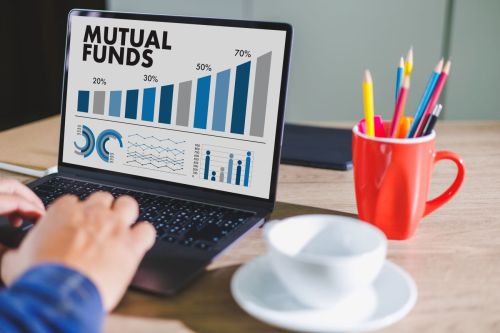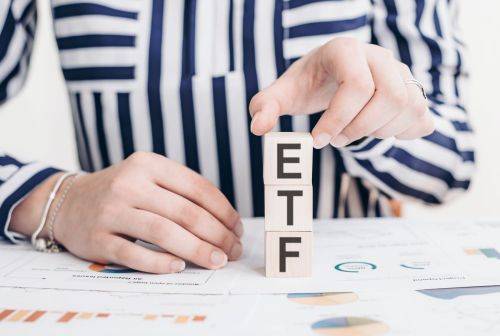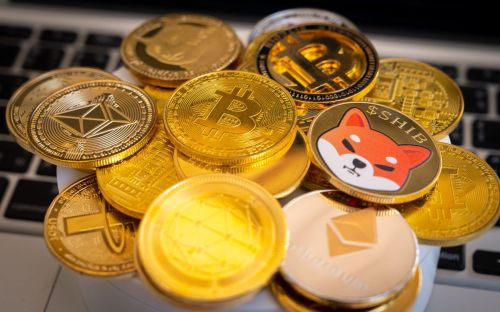Exchanged-Traded Funds (ETFs): Guide for Parents & Teens
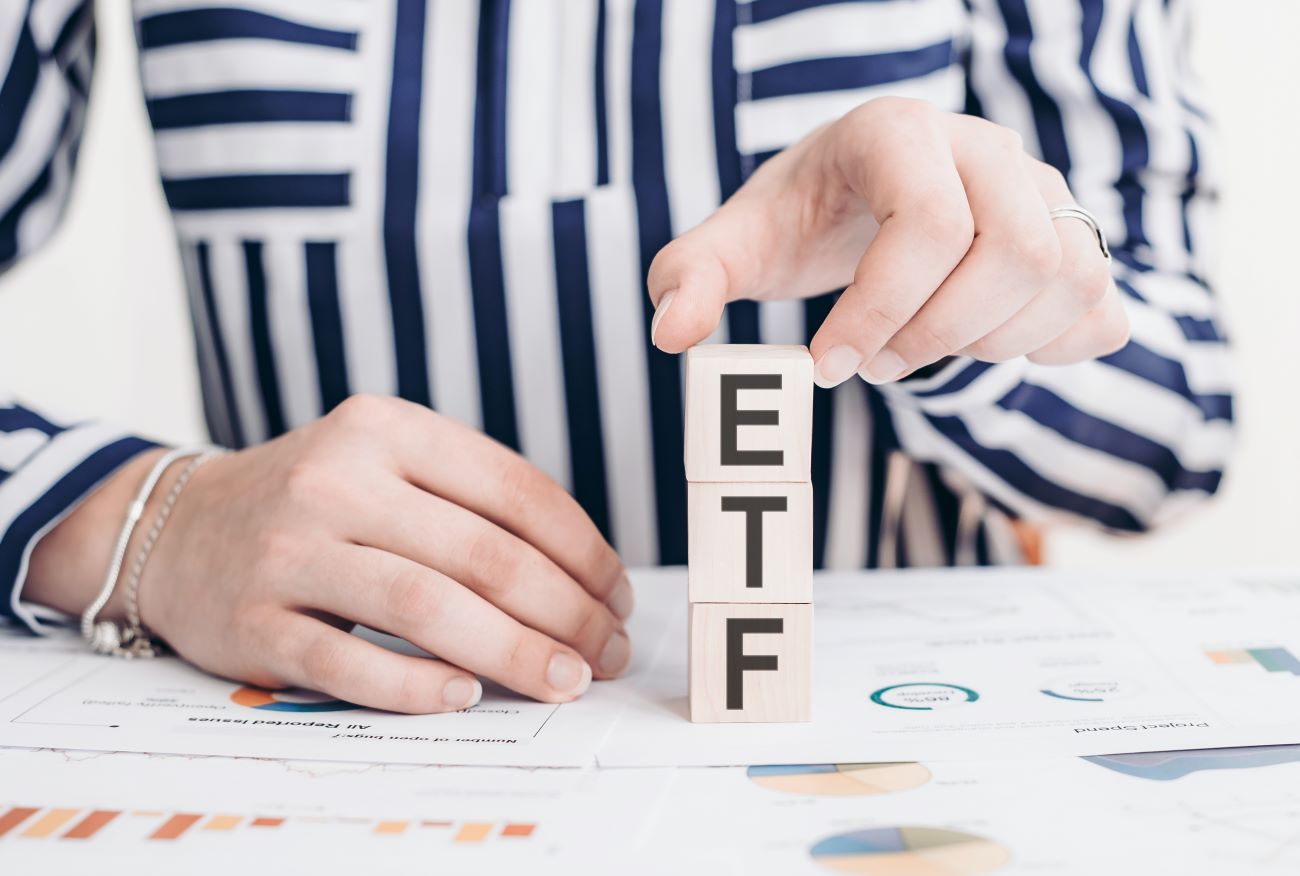
Buying and selling products on the stock market can be intimidating, especially when the prices seem to go up and down daily. But who wouldn’t want to take advantage of the historic returns we’ve seen over the past few years?
Fortunately, exchange-traded funds, or ETFs, offer a lower-cost way to begin investing in the stock market, without the risk of buying and selling individual stocks that could gain and lose value.
Maybe your teen has heard about ETFs and wants to know more—or maybe they (or even you, no judgment here!) have no idea what they are. Either way, read on to learn more about this financial product, why it’s a great foundation for building an investment, and how to get started.
Key takeaways
- ETFs are diversified, low-cost investment funds that bundle together dozens of stocks, bonds, or commodities into one financial product.
- You can purchase ETFs through a financial advisor or an exchange platform, just as you would individual stocks and bonds.
- ETFs help reduce risk by spreading out your investment across multiple stocks.
- ETFs have many things in common with mutual funds, but they generally have lower fees and more flexibility.
What is an exchange-traded fund (ETF)?
ETFs are diversified, low-cost investment funds that are “passively managed” (as opposed to actively managed funds) through a computer algorithm that mirrors the market index. In other words, they’re managed by math!
The first-ever ETF appeared on the Toronto Stock Exchange (TSX) in 1990, with the first American ETF launching a little later, in 1993. These relatively new funds contain a bundle of stocks or bonds that you can buy for a single price, with low fees. Think of a basket with different-coloured eggs inside: ETFs are the entire basket, not the individual eggs.
Through their special algorithm, ETFs not only track the value of their assets (i.e., the eggs inside the basket), but they’re also designed to track the performance of related stock indexes, or markets, like the TSX or the S&P 500 (that’s Standard and Poor’s 500). Because the algorithm is doing all this tracking work, and not a bunch of people, ETFs typically offer much lower fees.
Investing in ETFs could help strengthen your teen’s investment portfolio—which is bank-speak for all the places you’ve invested your money—by spreading out risk. Again with the egg analogy: Instead of putting a lot of money into an individual stock, say, only blue eggs, ETFs help you spread money across many investments chosen by an algorithm that’s designed by financial experts. Now you have yellow, red, green, and blue eggs in your ETF basket. If those blue eggs don’t perform well, no worries, as the other eggs should make up for it.
ETFs also make it easy to invest across a wide range of stocks grouped together by index (or market), geographical location, industry, or other factors. If your teen wanted to invest outside of Canada, for example, ETFs provide a convenient way to invest outside our borders without the hassle of calculating currency exchanges.
In a nutshell, ETFs are an easy way to add diversity into an investment portfolio without the time commitment required to research dozens of individual stocks and bonds.

ETFs versus mutual funds
Confused about how ETFs are different from mutual funds? You’re not alone, because the two financial products do have some things in common:
- Both ETFs and mutual funds offer the benefit of diversification in your investments.
- A mutual fund is a collection of assets actively managed by a fund manager—a human being—who picks specific stocks and bonds to include or remove. With ETFs, it’s not a person but an expert-designed algorithm that tracks the behaviour of other (human) experts as they buy and sell on the stock market.
- As with all investment products, both ETFs and mutual funds have the potential for financial rewards—and financial risks. These risks (and rewards) are hedged because they’re spread over several stocks.
ETFs and mutual funds are also different in some important ways:
- Typically, ETFs have a lower upfront cost than mutual funds. You can begin investing with just one ETF, then add to your portfolio over time. This lower cost also makes your investment more liquid, i.e., easier to buy or sell.
- ETFs have lower fees than mutual funds, although the gap between them is closing: Generally speaking, ETFs have fees ranging between 0.05 per cent and to 0.5 per, compared to two per cent or more for mutual funds.
- ETFs are usually easier to buy and sell than mutual funds—some can be purchased commission-free through financial advisors or on many online brokerage accounts. Mutual funds are purchased directly from the fund or broker who buys the pooled shares for investors.
- With ETFs, it’s easier to know the value of your investment. Mutual funds are priced once per day, but the price for ETFs goes up and down throughout the day with the movements of the market. If they wanted to, your teen could check on them regularly—or they can set it and forget it by automating regular deposits into an investment account and checking on it from time to time.
- Finally, ETFs and mutual funds differ in their returns over time. Individual ETFs or mutual funds have different performance records based on several factors, such as which stocks and bonds they hold, how effectively they are managed, etc. But ETFs are more liquid and lower in fees, which could lead to higher returns over time.
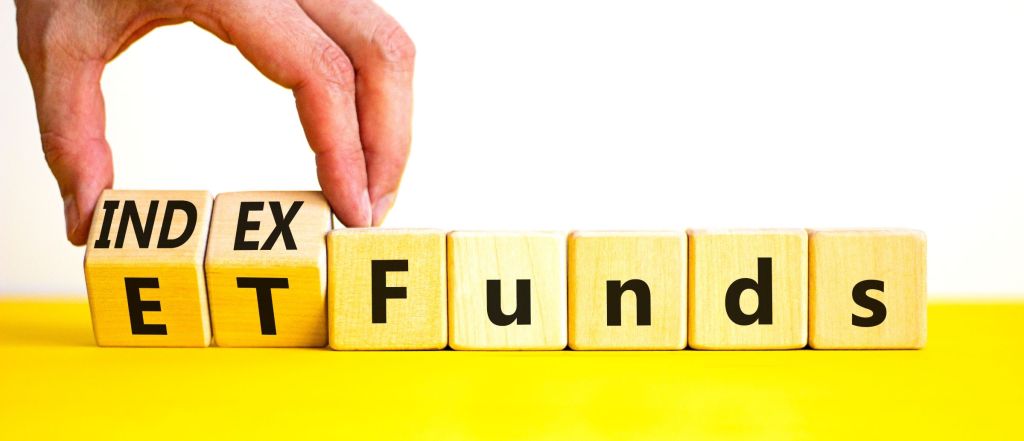
ETFs versus index funds
The difference between ETFs and index funds is minimal, which can make things confusing. This is because most ETFs are index funds…but not all index funds are ETFs.
Let’s break it down: An index fund is a collection of stocks and bonds designed to mirror the activity of a particular financial market—kind of like tiny food samples at the grocery store giving you a taste of larger grocery products. Index funds do this by containing a bunch of small investments in all of the companies in a particular market index, e.g., the S&P/TSX Composite Index.
Index funds are similar to ETFs—and sometimes are ETFs!—in that they provide a great way to diversify your investments. And like ETFs, index funds are a passive way to invest.
However, not all index funds are ETFs. Some of them are mutual funds, which means they’re likely to have the higher fees and lower flexibility that come along with that financial product.
What if your teen wants to invest in a variety of stocks and bonds that aren’t pegged to a specific financial index, like the TSX Composite Index? That’s where some of the other kinds of ETFs come into play.
Read more about basic investing terms for kids.
What are the different types of ETFs?
There are several different types of ETFs available on the market in Canada, with more being released all the time. This means it’s possible to customize an investment strategy based on country, economic sector, area of interest, or other factors, while still enjoying the lower risk that ETFs typically offer.
Index or equity ETF
An index ETF is a portfolio of stocks or bonds that mirrors the performance or composition of a benchmark index. For example, a stock-market-tracking ETF could mirror the S&P 500, an index of 500 American companies that are publicly traded and have a high market capitalization—that is, established companies that are worth a lot of money.
Thematic ETF
Some ETFs choose assets based on a general theme that investors are interested in. Some thematic ETFs on the market include sharia-compliant ETFs with assets that align with Islamic investment principles, or Web3 ETFs with assets that relate to technologies on the blockchain, cryptocurrency, and the metaverse.

Sustainable ETF
Sustainable ETFs (or socially responsible ETFs) include stocks and bonds representing companies and industries that are environmentally conscious and/or socially responsible. For example, sustainable ETFs might include assets tied to the renewable energy sector.
Sector ETF
Sector ETFs include assets related to a particular industry or economic sector, e.g., the energy or health-care industries. The indexes developed by MSCI (Morgan Stanley Capital International), and S&P provide a helpful overview of sectors and subsectors to use when researching this type of ETF.
Asset allocation ETF
What if that basket of eggs contained a bunch of smaller baskets of eggs? That’s one way to think about asset allocation ETFs, which are sometimes called ETFs of ETFs. Containing both stocks and bonds, often from around the world, they are an easy way to build a diversified financial portfolio by purchasing a single financial product.
International ETFs
Purchasing international ETFs sold in Canadian dollars is one way to add non-Canadian stocks and bonds to your portfolio without the complications of currency exchanges or holding foreign assets. Some international ETFs are very broad. Others might focus on a specific country or region, like the United States or the EU; on developed or emerging markets; or on a specific economic sector, like information technology companies from around the world.
Low- or minimum-volatility ETF
Minimum-volatility ETFs are designed to help reduce the risk of your investments. They tend to include stocks and bonds with a history of low volatility, and they offer even lower risk than regular ETF products. These ETFs can be a great way to balance out risk in a portfolio.
What to look for when buying an ETF
Purchasing an ETF is pretty straightforward. ETFs are offered by financial institutions, like RBC, or by independent brokerages. Then they are traded on an exchange—e.g., the TSX or the New York Stock Exchange—just like any other stock. Purchasing ETFs is as simple as depositing money into an exchange platform (also called an online trading platform), searching the stock ticker for the ETF you want, and clicking “Buy.”
But just like buying any stock, your teen should spend some time considering which ETFs make the most sense for their investment goals and priorities before putting down any money.
Length of time
Consider how long term you want your investment to be. If the answer is “years” or “decades,” an ETF should be a great way to benefit from long-term gains in the stock market without needing to actively manage a portfolio.
But if your teen wants to invest for the short term—for example, to save up for a vacation—they may wish to keep their money out of the stock market. Even lower-risk investments like ETFs still hold some risk.
Fees
When researching ETFs, remember to check their fees. These are represented as management expense ratio, or MER, which is a percentage of the overall value of your investment withdrawn by the brokerage. ETFs are generally a lower-fee product than mutual funds, but they do still have some fees, and the differences between funds can still add up.
For example, if a person had $10,000 in an ETF with a MER of 0.05 per cent, their fees are $5 per year. Not bad! But if that $10,000 investment is in an ETF with a MER of 0.15 per cent, the fees are now $15 per year. Still not a lot, but three times as much as the fund with a lower MER.
But remember, your teen is (ideally) investing over the long term! Get them to think ahead to when they’re investing larger amounts of money, and how those fees will add up over time.
Finally, consider the trading costs of buying and selling ETFs. Trading platforms and financial advisors will charge different fees. Your kids could look into online trading platforms that allow you to buy and/or sell ETFs for no commission fee.
Types of ETFs
Beyond length of time and fees, your teen might want to think about the type of ETFs they want to own. Consider factors like:
- Should you invest in a particular economic sector?
- Do you want to stick to established industries, like finance and the resource sector?
- Would you want to buy ETFs that align with a certain principle, like sustainability?
- Do you want to invest in specific parts of the world?
Once they’ve identified their priorities, teens may consider choosing one or two broad ETFs to start. If they’re not sure where to start, encourage them to make a short list of ETF options they might be interested in and follow them online for a few weeks or months to track their performance. Or, get the family involved and have each member make their case for their preferred choice.
How old do you have to be to buy an ETF?
In Canada, minors need parental permission to open an investment account. This means you must be 18 or 19 years of age, depending on your province or territory, in order to purchase ETFs. The exception is, if a parent or guardian opens a formal or informal trust account. Before doing this for yourself or your child, be sure you understand the tax implications and consider speaking with a lawyer or an accountant, if you’re unsure.

Are ETFs a good investment?
ETFs are typically a lower-risk, lower-cost way to begin investing in the stock market. They require less research and oversight to manage than individual stocks and bonds because they are programmed and contain many assets. ETFs can be purchased through an RRSP, an RESP, or a TFSA account, or through a non-registered account, so they are flexible. And with an increasing number of ETFs available all the time, your teen can choose investments that fit with their interests, values, and goals.
However, ETFs are traded on the stock market, which means they contain some risk. When the stock market is doing well, an ETF investment likely will, too—and when it’s not, they’ll likely drop. For that reason, ETFs are probably not a good choice if your teen is investing for the short term. There’s just no guarantee that initial investment will be there in full when they need it. And while ETFs are a passive investment, teens should still take the time to do some research to choose ETFs with a history of good returns.
That’s the 411 on ETFs! By choosing this diversified, low-cost financial product, your teen can begin to create a more simplified investment strategy. And as the variety of ETFs on the market increases, you can involve your children in the process of choosing the best ones for your family’s goals based on what’s important to you—and them.
Emerging financial products like ETFs highlight the importance of lifelong financial literacy. You can start your kids on this path by downloading Mydoh to help them manage their own money—and invest in their future.
This article offers general information only and is not intended as legal, financial or other professional advice. A professional advisor should be consulted regarding your specific situation. While the information presented is believed to be factual and current, its accuracy is not guaranteed and it should not be regarded as a complete analysis of the subjects discussed. All expressions of opinion reflect the judgment of the author(s) as of the date of publication and are subject to change. No endorsement of any third parties or their advice, opinions, information, products or services is expressly given or implied by Royal Bank of Canada or its affiliates.





